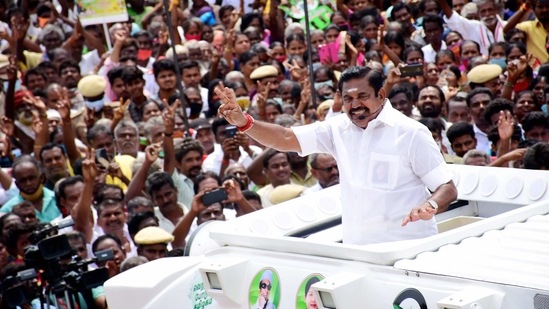Tamil Nadu: Dravidian parties face a high-pitched battle
The challenge in terms of forming alliances for both the parties is similar. Both of them have a better strike rate against the alliance partners of their opponents.
Tamil Nadu has seen power alternate between an AIADMK-led alliance and a DMK-led alliance since the late 1980s. With two of the state’s biggest leaders – J Jayalalithaa of the AIADMK and M Karunanidhi of the DMK – having died since 2016, this election will also be a test for their successors. While MK Stalin, son of Karunanidhi, has succeeded in the internal succession battle of the DMK, this election will be his most crucial test. In the AIADMK, while CM Edappadi K Palaniswami has made up with his deputy O Panneerselvam and blocked the re-entry, into the party, of his one-time mentor VK Sasikala, the party may face an identity crisis on account of its partnership with the BJP, seen as a North Indian, upper caste, Hindi speaking party.

Click here for complete coverage on Tamil Nadu elections
How are these parties dealing with this crucial election? A look at their transition from the 2019 LS polls to this one may provide some clues. The DMK contested 23 LS seats in 2019, 11 fewer than the 34 seats it contested in 2014, and offered the rest to allies. The result was a strike rate of 97.8% in the 138 ACs it contested. This has allowed the DMK to negotiate a seat sharing deal for this poll, whereby it is contesting on 173 seats, leaving 61 to its allies. However, 15 of those 61 candidates of allies will be contesting on DMK’s symbol .
Also Read | Tamil Nadu: An election that is Stalin's to lose
The AIADMK’s fate in the 2019 LS election was the opposite of the DMK’s , although it too contested just 21 seats. Its AC-level strike rate was 7.1%. The 2004 and 1996 elections, when DMK won big, are also the elections where the AIADMK’s strike rate was lower than in 2019. Yet, instead of giving away even more seats to its allies, the AIADMK decided to contest 191 of 234 ACs (which might include smaller parties contesting on the AIADMK symbol like the DMK). Barring 2016, the last time the party contested on a higher number of seats was in 1989, when it contested 198. This could be a response to the DMK attacking its alliance with the BJP. The BJP contested on 30 ACs in 2019 if the Lok Sabha seats are disaggregated to ACs. The AIADMK has offered it just 20 ACs in this election.
The challenge in terms of forming alliances for both the parties is similar. Both of them have a better strike rate against the alliance partners of their opponents. This explains their need for contesting a large number of seats in this election. However, they also need alliances for forming a coalition that appeals to OBCs and SCs, who constitute 88% of the state’s population. Between the 2016 and 2019 polls, the AIADMK suffered the most in terms of contested vote share in the Central and Chennai regions, which have a bigger share of SCs, than in the western and southern regions, which have a higher share of OBCs. The DMK gained the most in terms of contested vote share in the western region, which has the highest share of OBCs.






